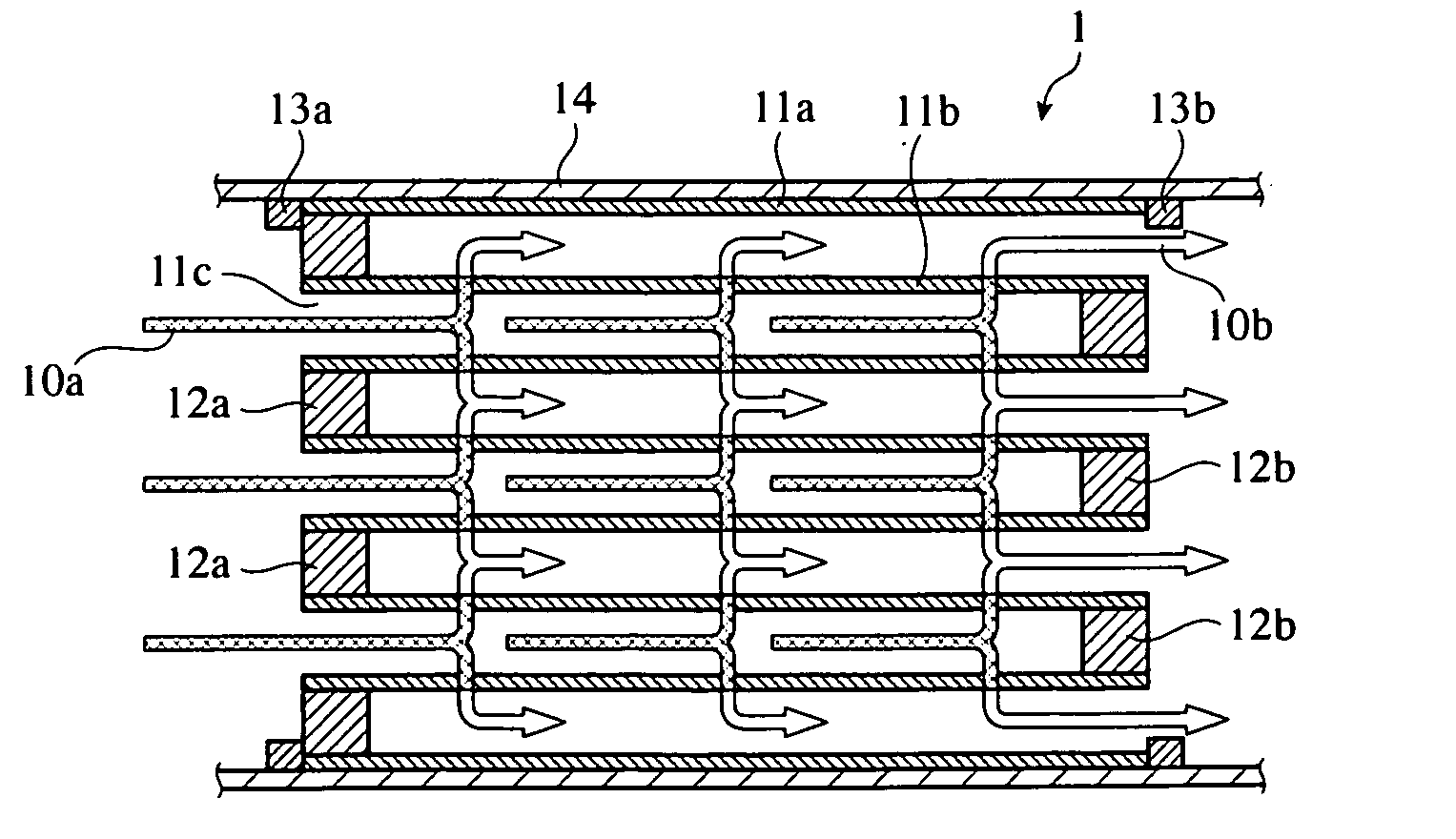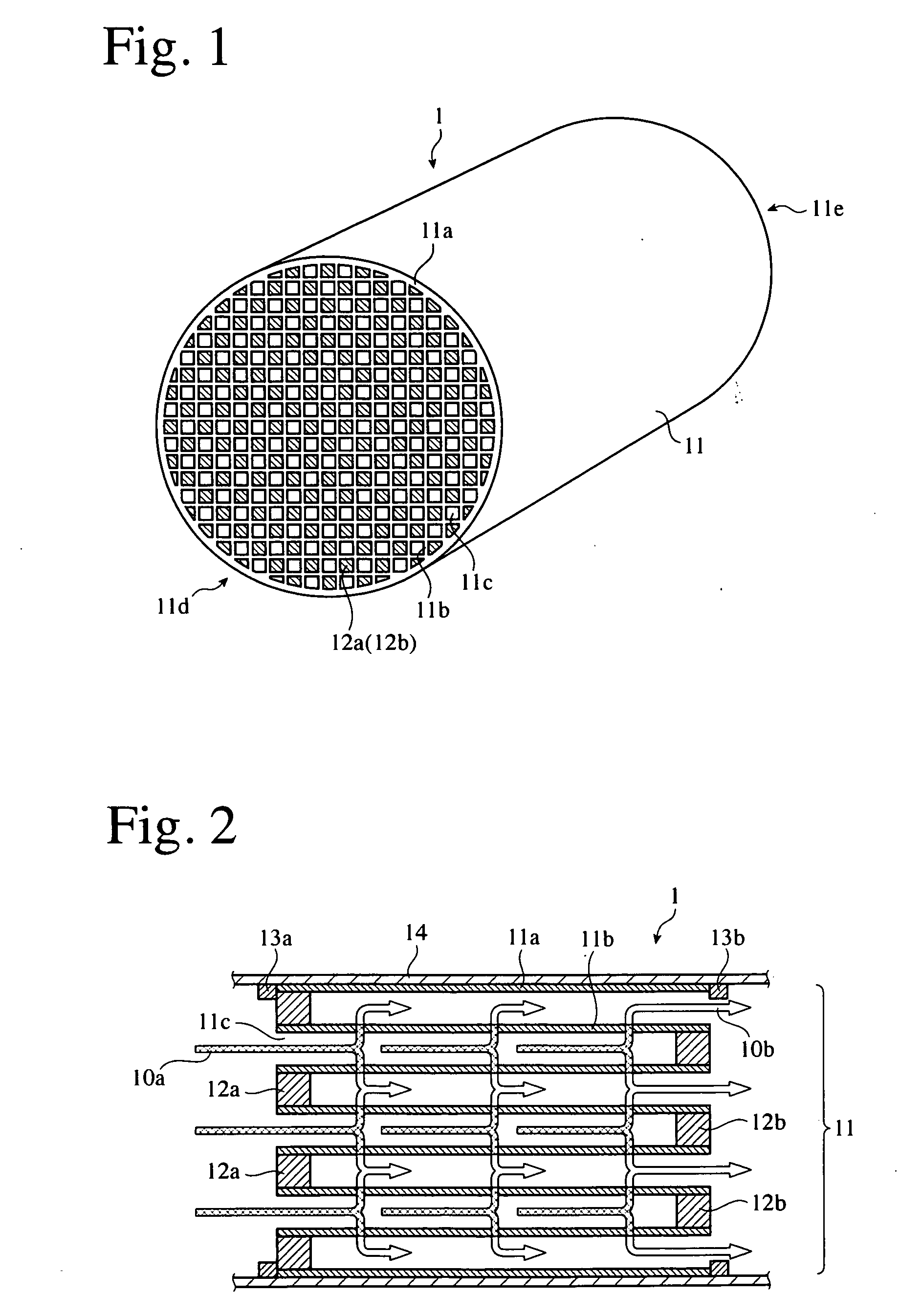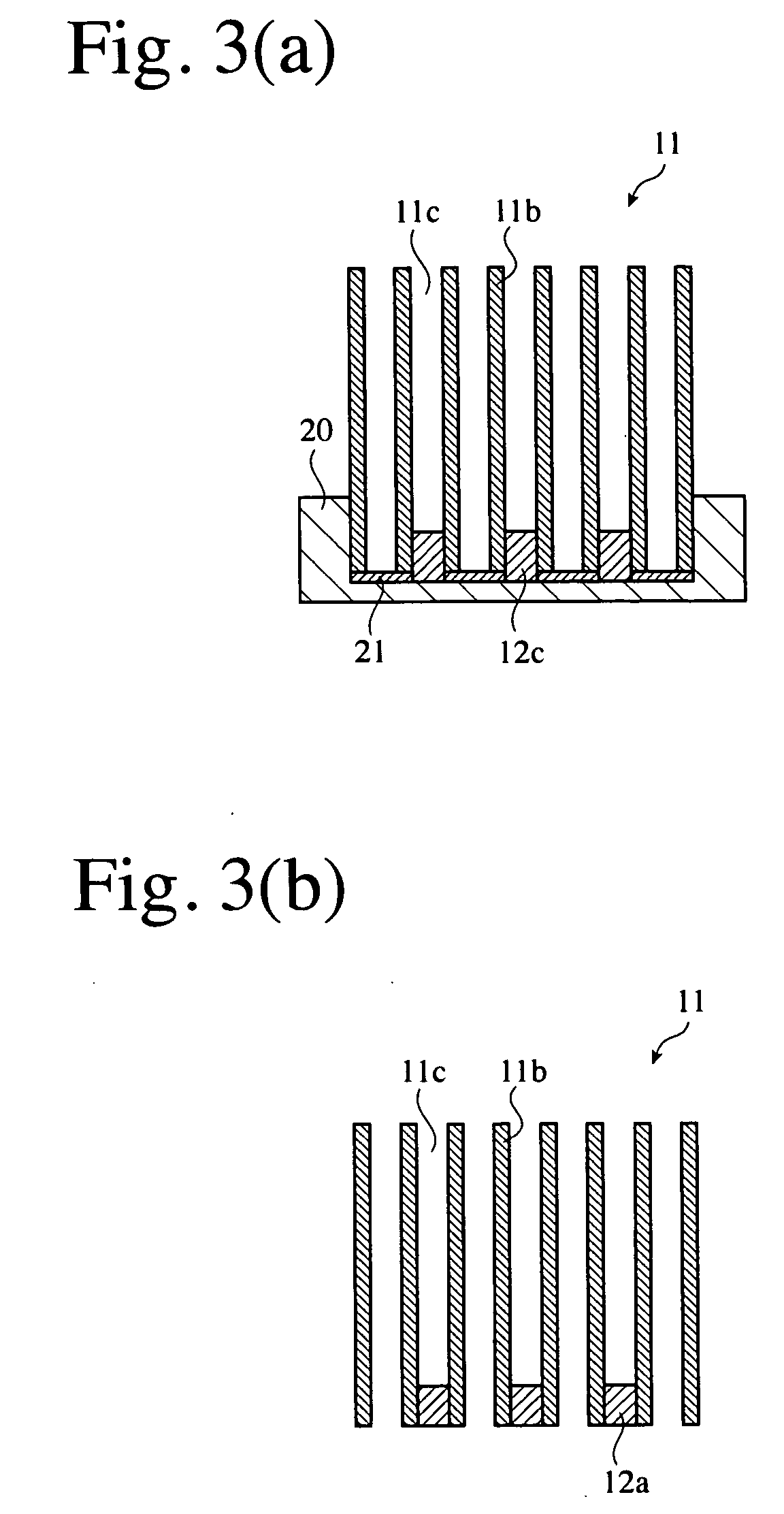Ceramic honeycomb filter, its production method, and plugging material for ceramic honeycomb filter
a technology of ceramic honeycomb and honeycomb filter, which is applied in the direction of domestic applications, machines/engines, chemical/physical processes, etc., can solve the problems of reducing engine power, difficult to make the thermal expansion coefficient of cordierite ceramic honeycomb structure equal to that of the plug, and relatively large thermal expansion coefficient. , to achieve the effect of small difference in thermal expansion coefficient, excellent thermal shock resistance, and small residual stress
- Summary
- Abstract
- Description
- Claims
- Application Information
AI Technical Summary
Benefits of technology
Problems solved by technology
Method used
Image
Examples
Embodiment Construction
[0025] The ceramic honeycomb filter of the present invention comprises a sintered ceramic honeycomb body made of a cordierite-based ceramic material, and plugs formed in predetermined flow paths of the sintered ceramic honeycomb body, at least part of the plugs being formed by a plugging material comprising ceramic particles and colloidal oxide. By filling the plugging material into the predetermined flow paths of the sintered ceramic honeycomb body and then heating it, the colloidal oxide is converted to an amorphous oxide matrix, resulting in strong bonding of the plugs to the sintered ceramic honeycomb body. The plugging material for plugs will be explained first, and the ceramic honeycomb filter and its production method will then be explained.
[0026] [1] Plugging Material
[0027] Ceramic particles in the plugging material for the ceramic honeycomb filter of the present invention are preferably cordierite particles and / or amorphous silica particles. This is because small thermal ...
PUM
| Property | Measurement | Unit |
|---|---|---|
| Temperature | aaaaa | aaaaa |
| Temperature | aaaaa | aaaaa |
Abstract
Description
Claims
Application Information
 Login to View More
Login to View More - R&D
- Intellectual Property
- Life Sciences
- Materials
- Tech Scout
- Unparalleled Data Quality
- Higher Quality Content
- 60% Fewer Hallucinations
Browse by: Latest US Patents, China's latest patents, Technical Efficacy Thesaurus, Application Domain, Technology Topic, Popular Technical Reports.
© 2025 PatSnap. All rights reserved.Legal|Privacy policy|Modern Slavery Act Transparency Statement|Sitemap|About US| Contact US: help@patsnap.com



